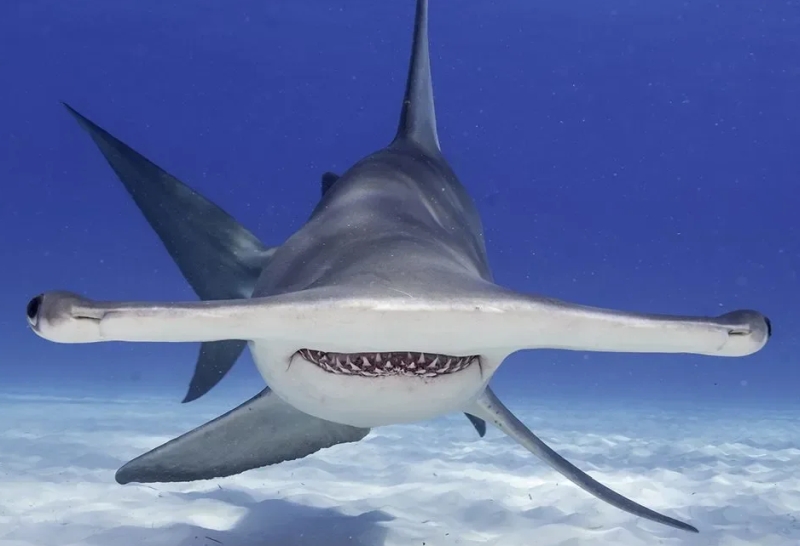 
Great hammerhead sharks are apex predators and can be found worldwide in coastal, warm waters. Unlike other hammerhead sharks, great hammerhead sharks are solitary, migrating upward of 1,200 km alone. This shark's name comes from the unusual shape of its head, which helps it to find and immobilize its favourite meal: stingrays. The great hammerhead shark is the largest of all nine hammerhead species. These sharks have an average length of 4 metres and weight of 230 kilograms. (The longest great hammerhead shark ever recorded was 6.1 m long, and the heaviest was 450 kg. The species is distinguished from other hammerheads by its straight hammer-shaped head.  The shark's eye placement, on each end of its very wide head, allows it to scan more area more quickly than other sharks can. Like other hammerhead species, great hammerhead sharks have long, serrated teeth and use their hammer-shaped heads to detect and eat prey. 
Their heads are equipped with electrical receptors that can sense potential prey, including those hiding in the sand. Hammerheads are aggressive hunters, feeding on seafloor fish, stingrays, octopuses, squid, crustaceans and other sharks. The shark uses its wide head to trap stingrays by pinning them to the seafloor. Hammerheads do not actively seek out human prey, but are very defensive, and will certainly attack when provoked. Great hammerhead sharks have a faster growth rate than other hammerhead species, and reach maturity earlier, between 5 and 9 years old. They mate via internal fertilization, and give birth to live young – anywhere from 6 to 42 pups – once every two years. Great hammerheads can live up to 44 years, and possibly longer. Great hammerheads are particularly threatened by the global shark fin trade because of the large size of their fins; they are an endangered species. 

  |